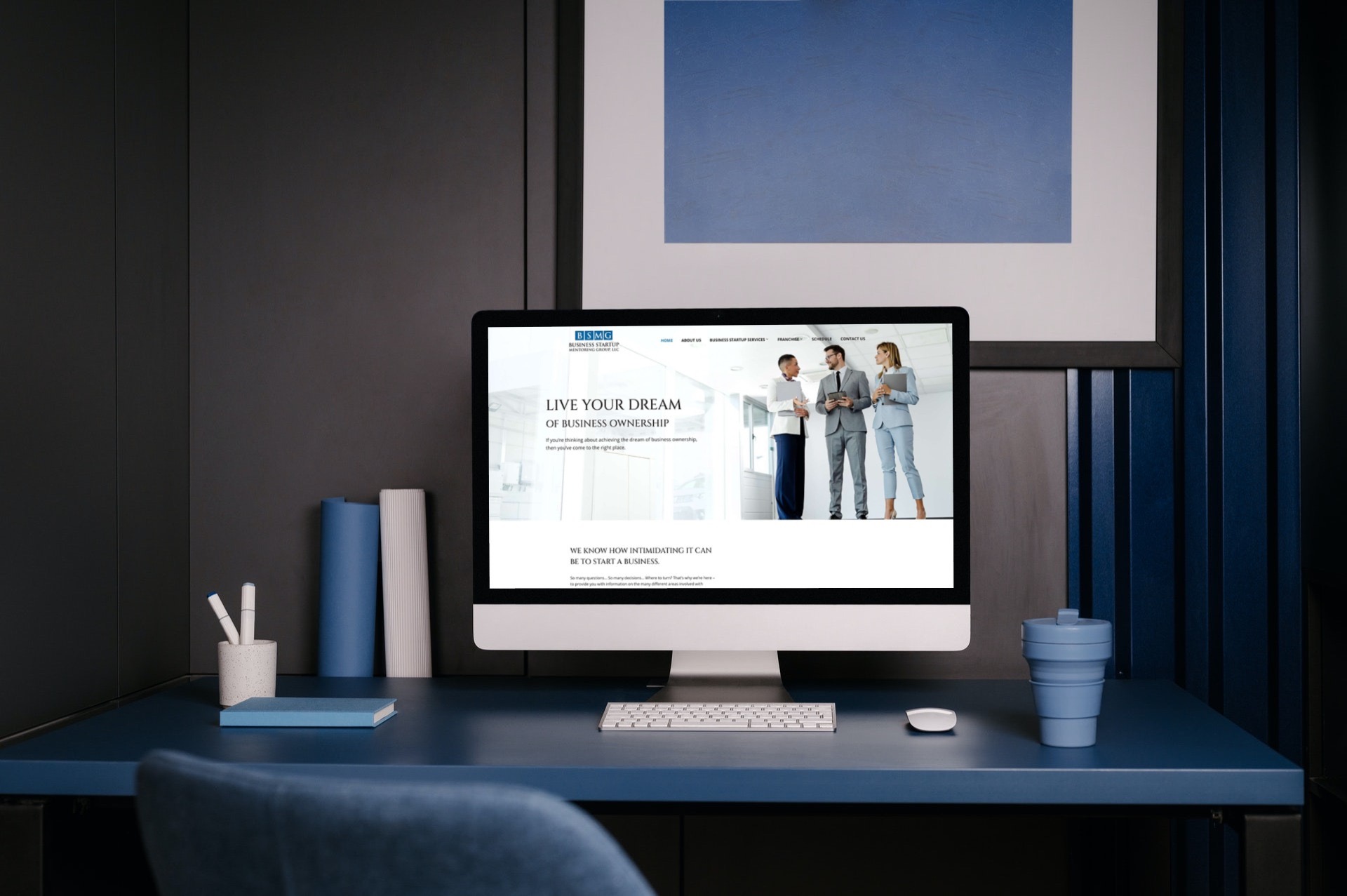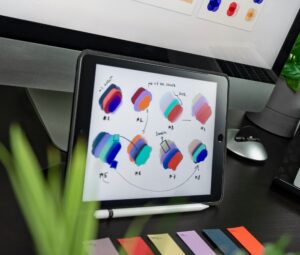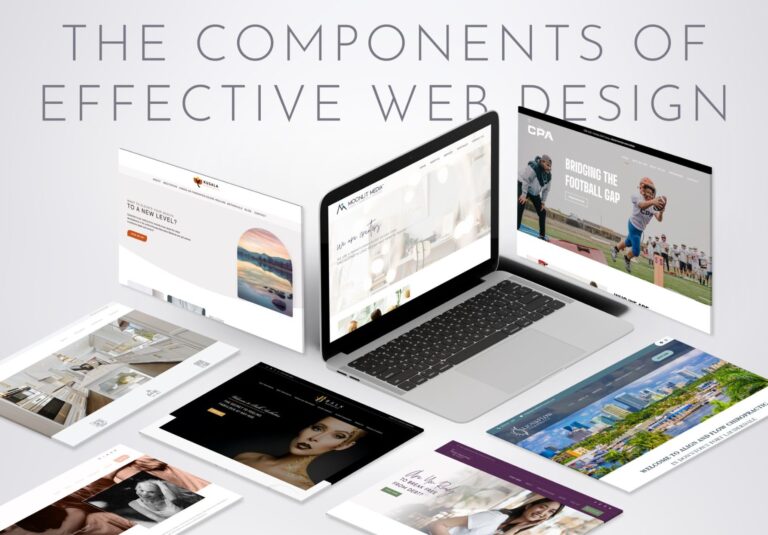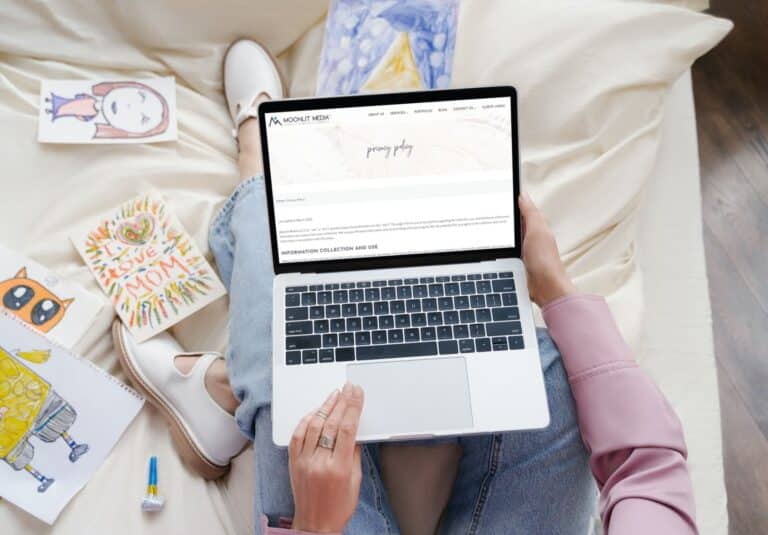Let’s be real—before anyone engages with your business, they’re judging your brand based on what they see. First impressions happen fast, and for small businesses, graphic design often is that first impression.
Great design communicates professionalism and makes people want to engage with you. No matter what type of small business you’re building, having the right graphic design assets can make or break your growth. The truth is, strong design makes your business look as good as it really is. If you’re running a small business, investing in graphic design essentials can give you the edge over your competition.
So if you’re building your brand or giving it a refresh, here are 10 graphic design must-haves every small business should have ready to roll in 2025.

1. A Professional Logo
Your logo is the face of your business. It’s the symbol customers associate with your brand, and it needs to leave a lasting impression. Your logo should work everywhere, whether it’s on your website, business cards, signs, or even stickers.
As your most versatile tool, your logo needs to be designed in multiple formats including full color, black and white, and a simplified, icon-only version. This flexibility ensures it looks amazing no matter where it’s used.
And, your logo has to be scalable and readable at any size. Whether it’s blown up on a billboard or shrunk down to a tiny social media icon, it should remain crisp and clear.
Tip: If your logo gets blurry or distorted when resized, that’s a sure sign it’s time for an upgrade. Don’t underestimate the power of a well-designed logo!
2. Style Guide
A style guide is your brand’s visual cheat sheet. It outlines your logo usage, color palette, fonts, imagery styles, and even your brand tone of voice.
Whether you’re crafting social media posts or collaborating with external designers, having a style guide ensures that everyone stays on the same page. Consistency is key when it comes to building brand recognition—and with recognition comes trust. A cohesive visual identity helps your audience immediately connect with your brand, no matter where they encounter it.
To make the most of your style guide, include examples of your design assets in action, such as mock Instagram posts or flyer layouts. These practical examples make it easier for other team members and outside vendors to understand and follow your branding guidelines.

3. Business Cards
Yes, even in the digital age, business cards are still relevant—especially for local businesses and in-person networking. They offer a tangible, personal touch that digital exchanges just can’t match.
A well-designed business card does more than share your contact info. It reinforces your brand and helps people connect with you easily after a meeting or event. It’s a small but powerful tool in your marketing arsenal.
Your business card should include your logo, name, contact information, social media handles, and possibly a QR code that links directly to your website or contact page. And don’t forget the design itself—it should reflect your brand’s tone. Whether your business vibe is quirky and fun, or sleek and professional, your card should say so at a glance.
4. Social Media Templates
Social media is where the magic happens for many small businesses. Branded social media templates help you show up consistently and professionally, every time you post—without being super time-consuming.
Templates are a game-changer for creating content that is always on-brand. They make it easy to churn out high-quality posts on the regular, which is crucial for building recognition and trust with your audience. Plus, having templates ready to go saves you time and effort, so you can focus on crafting the message while knowing your visuals will always look amazing.
To make the most of your templates, consider creating versions for a variety of post types. Promotions, announcements, testimonials, or even seasonal updates can all benefit from a tailored template.
Also, keep in mind that every platform has its own quirks—ensure your designs are optimized for different formats, whether it’s an eye-catching Instagram Story or a professional and clean LinkedIn post. Prioritizing flexibility and versatility in your templates will help you shine no matter where you’re posting.

5. Website Graphics
Your website is your small business’s digital storefront, and it needs to make a great impression. Images, banners, icons, and other graphic elements all play a role in enhancing the user experience
Good website graphics are essential for making your site easier to navigate, guiding visitors toward key information, and reinforcing your messaging. Every visual element contributes to how users interact with your website. As such, well-designed graphics play a functional role in keeping visitors engaged and exploring further.
And, remember to make sure your website graphics are optimized for both desktop and mobile visitors. It’s crucial that your website is responsive and looks good on all devices. This will not only provide a better user experience but also improve your site’s search engine ranking.
6. Email Newsletter or Header Template
Email marketing continues to be one of the most effective ways to connect with and engage your audience, and incorporating eye-catching graphics can take your campaigns to the next level. The visuals you choose play a key role in capturing attention and driving action.
Consistency in your branding is essential for fostering trust and creating a sense of familiarity with your audience. By maintaining a cohesive look across all your newsletters, including your logo, brand colors, and other visual elements, you can build stronger connections with your readers.
To ensure success, focus on clean, simple designs that are easy to read and visually appealing. Don’t forget to include clear call-to-action buttons that guide your audience to take the next step. And, most importantly, make sure your newsletter looks great on both desktop and mobile, so every reader has the best experience possible.

7. Print Materials (Flyers, Brochures, Rack Cards)
Although many interactions take place online, print materials continue to play a valuable role in reaching your audience. These physical items, such as flyers, brochures, and rack cards, allow potential customers to walk away with a tangible reminder of your business, keeping your services fresh in their minds and making a lasting impression.
To make your print materials truly effective, focus on designing them with a clear goal in mind. Ensure that the messaging is concise and impactful. Pair your content with eye-catching visuals to grab attention and maintain alignment with your overall branding. Thoughtfully crafted print pieces can leave a meaningful impact, connecting your audience with your business in a way that stands out.
8. Signage (Indoor & Outdoor)
Your signage plays a critical role in shaping your customers’ first impressions, whether it’s a storefront placard welcoming them in or a banner at a trade show representing your brand. And, the design and clarity of your signage can make all the difference in how your business is perceived. It’s your opportunity to catch attention and instantly tell people who you are and what you offer.
To create effective signage, focus on designs that are both bold and readable, even from a distance. Use your brand colors and fonts consistently to make it easier for customers to recognize your business. By ensuring your signage is visually appealing and aligned with your brand, you’ll leave a memorable impression that resonates with your audience.

9. Packaging or Product Labels
For product-based businesses, exceptional packaging isn’t just a nice bonus—it’s a must-have. Packaging is often the first physical experience a customer has with your brand, making it a crucial touchpoint for creating a strong and lasting impression.
Beautiful and functional packaging can influence purchasing decisions in powerful ways. Eye-catching designs and thoughtful details can draw attention to your product on a crowded shelf while also communicating your brand’s message. When done right, packaging becomes a reflection of your brand’s personality, values, and commitment to quality.
Besides essential details like barcodes, product descriptions, and ingredients (if applicable), labels also provide a unique opportunity to connect on a deeper level—use them to tell a mini-story about your brand and what you stand for.
10. Menu or Service List Design
If your business provides a range of services or products (like a restaurant or spa), having a thoughtfully designed menu or service list is essential. A well-crafted menu isn’t just functional—it’s an extension of your brand that can elevate the customer experience.
Why does it matter? A clear and visually cohesive menu or service list ensures customers can easily understand your offerings and make informed decisions. A cluttered or confusing layout can frustrate customers, so prioritizing an intuitive, user-friendly design is key.
For best results, focus on readability by using clean layouts, logical organization, and clear sections. Every detail matters, from font choice to spacing, to make the information accessible and visually appealing. Additionally, consider offering a digital version of your menu or service list for added convenience to your customers.
Polishing Your Brand for Success
An investment in professional graphic design isn’t just about looking good—it’s about building trust, boosting conversions, and creating an experience that customers remember.
Need help bringing your brand to life? Contact Moonlit Media—a full-service graphic and web design agency ready to help your business look as good as it is.








